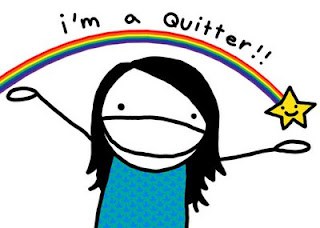
Lesson 3: Quit to win
Every week, I meet with entrepreneurs who are lit up with a passion for their business. Typically, when I am asked to advise someone, I will ask what the top issue is that I could help him or her with. True to form, they begin to describe their social media plan, followed by a description of the slides in the investor presentation they will inevitably make. They would be hard-pressed to omit the amazing code they are in the process of building and the great feedback received from a PR agency they met with, and on and on. Invariably, and quite clearly, there is a lot on their mind.
I usually find myself interrupting the barrage of lofty plans and ask, “So what’s most important right now? What are you working on first?” It often results in slightly confused looks, hands still aloft in mid-air from the high-velocity gestures used to describe their plans. “Well, all of them,” I’ll hear. “That’s why I need help.” This is a telltale sign that I won’t be acting as an advisor for that company much longer.
Prioritization is an entrepreneur’s most important responsibility. Start-up CEOs need to know what to do and what to quit doing. Doing everything at once doesn’t work. Andy Rachleff, one of my professors in business school and a prominent venture capitalist, once shared a technique he uses to weed out founders who haven’t learned the critical skill of knowing what to work on, and what to quit. After hearing the pitch of a business he’s interested in, he will email the CEO a litany of questions he wants answered ASAP. Unbeknownst to the entrepreneur, Andy intentionally mixes important questions with fluff questions. These fluff questions require a good deal of time-wasting research and so the entrepreneur has some important decisions to make, and quick. The founder, eager to please the VC and get the investment, has to choose where to best spend his time. If the CEO answers all the questions and does all the research requested, he fails the test and Andy passes on the deal. If the founder prioritizes correctly, picking the most important questions to address while selectively de-prioritizing the rest, he passes the test and goes to the next round of the investment process.
Instead of trying to do everything all at once, the start-up CEO needs to focus on what really matters. Like in running, all that matters is the very next step. While barefoot running in particular, I scan the road ahead to see what my foot will come in contact with when it hits the pavement. By focusing the mind on the very next step, you prioritize what you should be doing right now. Do it correctly, and quit worrying about everything else.
The size of your next step depends proportionally on the size of your company. In very early companies, you need to focus on baby steps to validate your vision. Questions like, “how do we get a user to open our app daily?” or “how do we get a user to register with their email?” are often the most important next steps. For larger companies, next steps include bigger strides. The OKR, or Objectives and Key Results method is one taught to me by our investors at KPCB and I recommend it for growing companies.
Just make sure to match the size of your next step with the size of your company. Taking too big of a stride can distract you from the small steps needed to get you there. Keep the steps small and actionable. Taking too big of a step often leads to confusion and exhaustion as team members struggle with objectives too far out of reach to know exactly what to do next. You’ll know your next step is the right size when, like running, it’s easy but not effortless. It should flow from your organization like one foot following the last. People love to see progress, even from small steps. This is one of the reasons burn down charts work so well in Agile software development but the principle of taking small steps along a journey can be applied in many situations, in business and in life.
By taking small, attainable, and thoughtful steps in your business, you will increase team motivation and focus. Successful people thrive on re-prioritizing work by quitting some tasks to maintain focus on more important work. Don’t think too far down the road to the finish line; just keep moving forward. Like running barefoot, successful entrepreneurs follow their feet.
See part 1 here and part 2 here of this 3-part series.
Related Articles
- Schedule Maker: a Google Sheet to Plan Your Week
- Habit Tracker Template in Google Sheets
- The Ultimate Core Values List: Your Guide to Personal Growth
- Timeboxing: Why It Works and How to Get Started in 2024
- An Illustrated Guide to the 4 Types of Liars
- Hyperbolic Discounting: Why You Make Terrible Life Choices
- Happiness Hack: This One Ritual Made Me Much Happier
